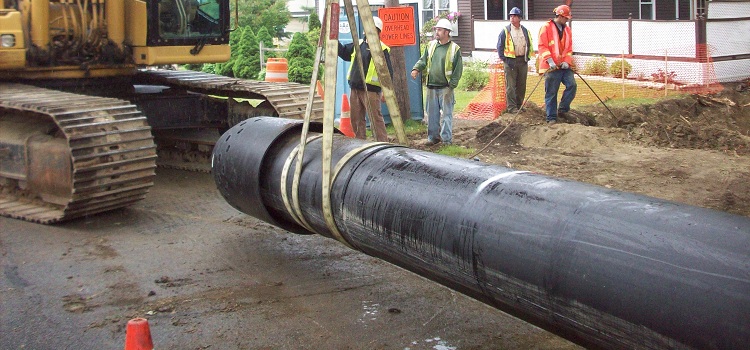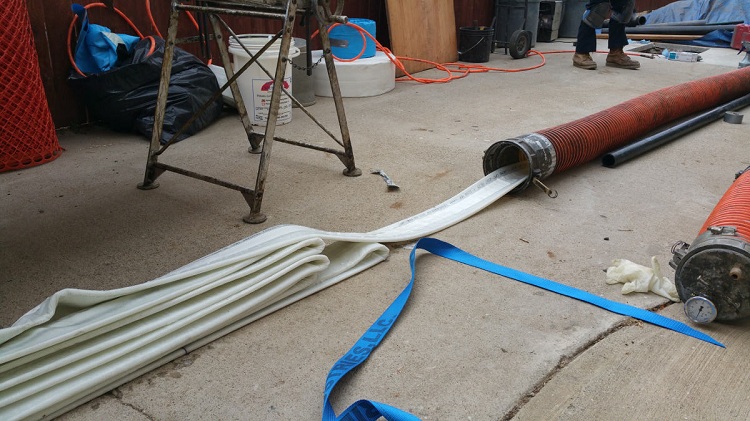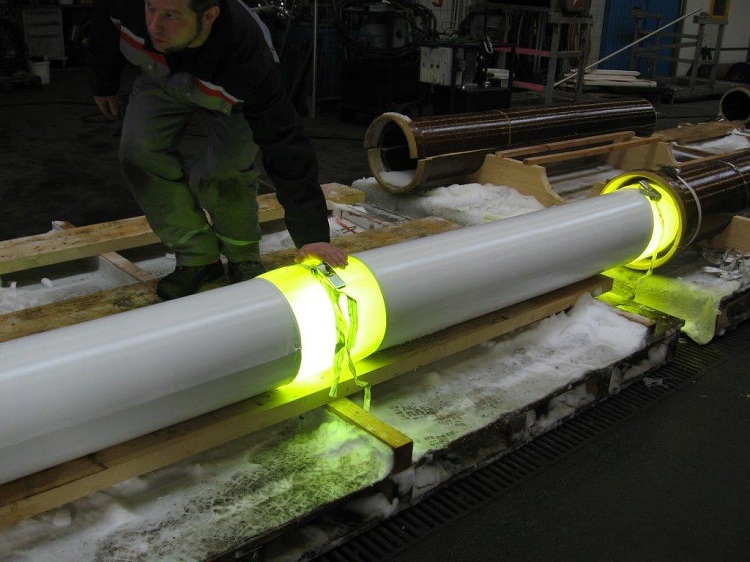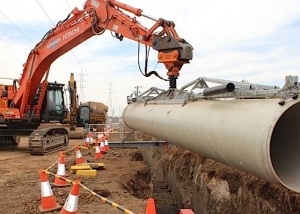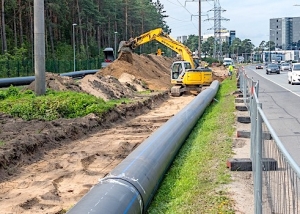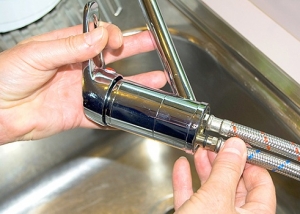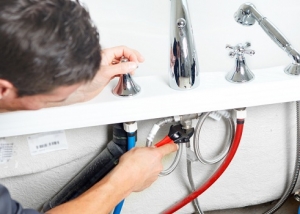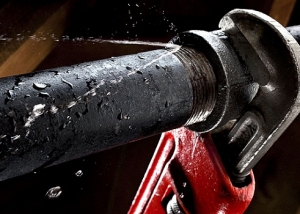Repair of communications laid under the highway has to be done due to the growing load on the road surface and pipe wear. But a dug road is a serious problem for freight traffic and passenger transportation. In order to prevent traffic jams and congestion, the rehabilitation of pipelines is becoming increasingly important. This is a special method of cleaning and restoring a pipe section without having to dig a large section of communications. The so-called "trenchless" method of restoring the existing pipeline, well known in Europe, is gaining popularity in our country.
Content
Why do we need sanitation of communications?
A large percentage of pipeline wear is the result of the Soviet legacy when they built a lot, but no one was responsible for the quality and long-term operation. The real life of metal pipes has been exhausted, and the systems work only until the next breakthrough. In the Russian Federation, more than half of the length of communications has long been rusted; new defects and breakthroughs are discovered annually. The second half is in pre-emergency condition, therefore, work to restore communications and pipe repair is carried out continuously.
It is interesting! The technologies used for trenchless pipe repair have been developed for a long time, in our country they were mastered at the turn of the 80-90s, but due to economic factors, their implementation was delayed indefinitely. They began to show active interest in them relatively recently.
Ways to solve the problem with leaky pipes
As foreign experience shows, the best solution is to use the method of trenchless restoration or rehabilitation of pipelines. Experts identified the 6 most effective repair methods without digging the soil:
- Obtaining a protective layer inside the cleaned pipeline using a polyethylene liner using the U-line technology. The coolant under pressure straightens this "gut" inside the repaired section of communications.
- According to the “pipe in pipe” technology, where a polymer fragment is fixed inside a damaged metal section. It is convenient not only for the restoration of water supply, but also for sewage. To do this, the old pipeline must be flushed with water under pressure.
- Partial hacking, when by analogy with the pipe-in-pipe method described above, a small change in diameter by 1 size is required. In this case, it is necessary to partially deform a fragment of the old pipeline by means of a pneumatic punch. This makes it possible to drag a longer length polymer insert.
- The method of spraying on a section of the prepared surface of a cement mortar pipeline with subsequent alignment with a conical nozzle. This technology is recommended for the restoration of water communications, in sewer systems it is not used.
- Progressive technology for carrying out restoration work with the help of technical robots that are effective in passing complex turning areas for fixing internal coatings.
Note! The so-called "hosiery" technologies for internal rehabilitation of pipelines are among the relatively fast and quite affordable. A special polymer “stocking” or liner is used in U-line technology.
The polymerization process takes place directly during fiber processing. However, this is a laborious process, which is problematic to use throughout the entire length of communications. Depending on the composition of the material, hardening of the liner can be done in different ways:
- under the influence of bright ultraviolet light (sleeve made of photopolymers, like dental fillings);
- from high water temperature;
- under warm air or steam under pressure.
Sanitation of pipelines using trenchless technologies is used not only in the metropolitan area, but also on the periphery - in large regional cities of the Russian Federation. Specialized firms, subject to preliminary cleaning of the restored communications, can restore 50-100 m of the pipeline in an hour.
Benefits of Trenchless Pipe Repair Technique
The main advantages of such technologies:
- minimizes the need for earthwork, which significantly reduces the cost of specialized transport;
- there is no need to draw up complex design and estimated works, since reorganization is carried out in one of the sections of the finished communications;
- a significant extension of the life of the repaired pipe;
- restoration work does not affect nearby networks;
- accelerated repair of damaged pipes;
- access to turning areas from the inside;
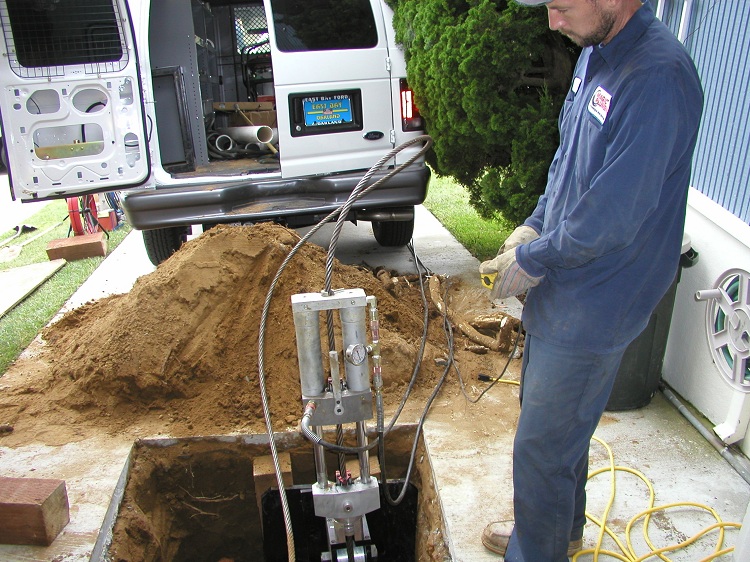
Pipeline restoration with modern technologies does not require the involvement of a large number of equipment and workers
- there is no need for access of excavating machines (other equipment) to the repaired fragment of the underground trench;
- minimum construction site and the number of specialists involved;
- resistance to corrosion and abrasive damage after polymerization of a seamless insert;
- internal polymerization of a large segment reduces the risk of new leaks;
- minimum change in the diameter of the cross section of the waterway;
- the transport stream continues to move during the rehabilitation of pipelines over the damaged area;
- improving the functioning and rate of advancement of the transported medium due to the smooth inner surface;
- works do not harm the environment;
- the ability to work at night, while robotic drills monitor the process of hardening the "stocking" inside the pipe with the image displayed on a computer program in real time.
When joining fragments, a press is used, traditional fittings and couplings - all work without welding. Reconditioned pipe withstands high pressure loads both inside and out. At the same time, the quality of work does not depend on the functionality of communications and on what material they are made of:
- steel;
- cast iron;
- polymer;
- reinforced concrete.
The diameter of pipes and embedded polymer hoses is within 600 mm.
Advice! Where breaks are often made and fragments of pipelines are excavated with digging trenches, it is worthwhile to make preventive pipe repairs using the “stocking” technology - on both sides of the problem area.
Phased pipeline recovery by trenchless method
If you work according to all the rules, it is better to start with a revision using a self-propelled robot. It will help assess the condition of the inner wall of communications using lighting and a camera that transmits information to the monitor.
Further, it is necessary to clean the problematic fragment of the pipe from deposits of calcium, sand and rust. But you need to be prepared for that during this stage of the work, the section destroyed by corrosion will become even thinner - new defects and tears are possible.It can be cleaned not only hydraulically, but also mechanically. At the end of the flushing, a second audit is necessary, since some indicators, especially the internal condition and diameter of the pipe, will be different. The examination is carried out using the same self-propelled revision robot.
The most thorough preparation and careful approach requires the stage of drawing the polymer stocking in an inversion (or other) way. It is straightened under a stream of water or compressed air. After filling in the fragment of the restored communication with the sleeve, the sanitation of the pipeline is completed by heating or lighting the internal coating through the polymerization (hardening) process. At the end of the pipe repair, a control examination is carried out by a technical robot with a television camera.
The described methodology for revising the pipeline is gradually becoming more and more popular, thanks to the obvious advantages over the old method of digging a trench.
